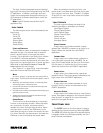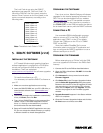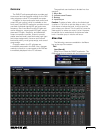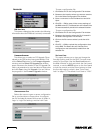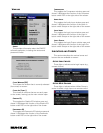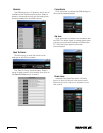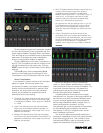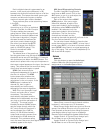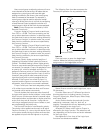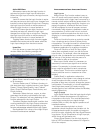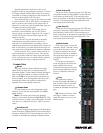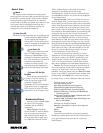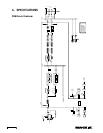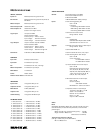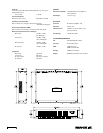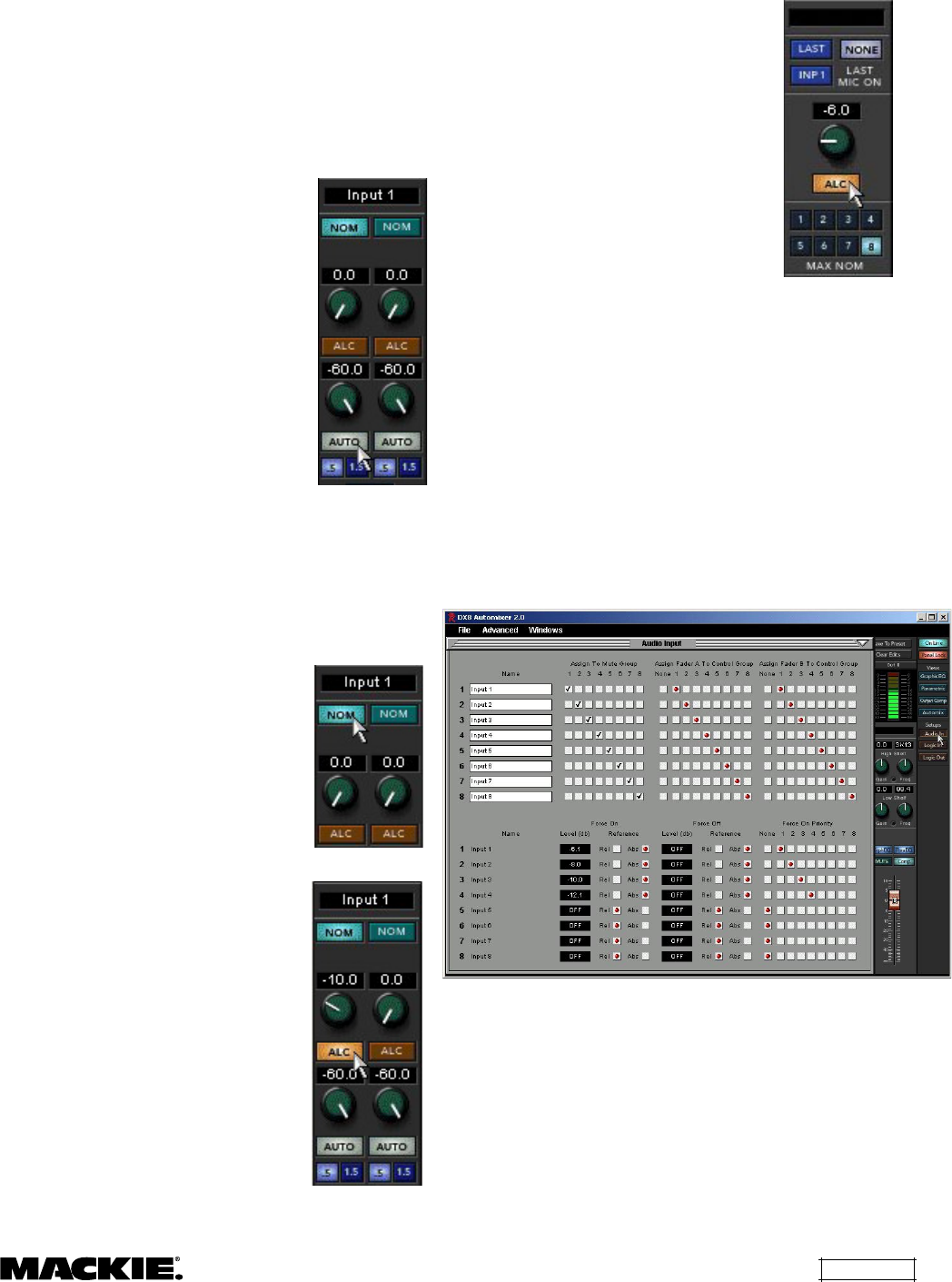
DX8 – 25
Each individual channel is attenuated by an
amount, in dB, equal to the difference, in dB,
between that channel’s level and the sum of all the
channel levels. This keeps the overall system gain
constant, and allows the system to deliver
maximum acoustic gain without feedback.
There are three parts to the automixing feature
in the DX8.
AUTO: This button turns
Automixing on or off for an individual
channel in the Mix A or Mix B output.
This also enables the automatic
gating feature. When the signal level
drops below a threshold (determined
by the automix algorithm), the gate
activates (closes) and reduces the
gain by an amount determined by
the control just above the AUTO
button, and ranges from 0 dB (no
gate) to –60 dB (full gating). This
control is sometimes called
attenuation depth.
The release time of the gate (how
fast the gate closes once the signal falls below the
threshold) can be set to 0.5 seconds or 1.5 seconds
with the buttons just below the AUTO button. The
attack time is preset with a very quick response so
the instant a signal appears at the input, the channel
opens. This prevents the first word from being
cutoff when someone begins to speak.
NOM: Each channel can be
configured independently for each of
the two mix outputs. The NOM
button determines whether that
channel is included in the automix
calculations for the mix output. If the
NOM button is selected on a
channel (lit), then its gain is
automatically and continuously
adjusted by the automix algorithm.
ALC: This is an Automatic Level
Control, and works like a “smart”
compressor. The threshold is
automatically calculated, and the
release time is deliberately set to be
very long to avoid the perception of
“pumping.” The range control,
located just above the ALC button,
sets the range through which the
ALC circuit works on the signal. It
can be adjusted from 0 dB (no
action), to –20 dB (the channel’s
output level remains constant from
the threshold to 20 dB above the
threshold). This provides a safety
net in the event that a very loud signal should
suddenly appear at the input.
MIX A and B Automixing Controls
The Mix A and Mix B outputs also
each have an ALC control. Click on the
ALC button to turn it on, and adjust the
range from 0 dB to –20 dB.
Each of the outputs have a MAX
NOM selection, from one to eight.
When 8 is selected, all eight of the
inputs are included in the automixing
calculations when NOM and AUTO is
enabled. If 4 is selected, only four
inputs are included in the automixing
calculations. The first four active
channels are included, and the
remaining channels are gated off until one of the
first four active channels turns off.
You can also choose whether to have the last
active channel remain open (LAST), to have Input 1
remain open (INP 1), or to have no channels remain
open (NONE) when there is no signal appearing at
any of the inputs. This can be set independently for
Mix A and Mix B outputs.
Setups
Audio In
Click this button to open the
Audio Input
window. Make the following settings and
assignments in the
Audio Input
window:
Name:
Enter a name for each channel with the
keyboard. It will accept up to 32 characters.
Mute Groups:
Assign each input to one of 8 mute
groups. Use a Mute Group to turn off (mute) two or
more channels at the same time. Mute Groups are
controlled by either a Logic Input or a Selection
Remote Control configured to operate a Mute Group.
Assign Fader A to Control Group:
Assign input
Bus A faders to one of 8 control groups.
Assign Fader B to Control Group:
Assign input
Bus B faders to one of 8 control groups.



